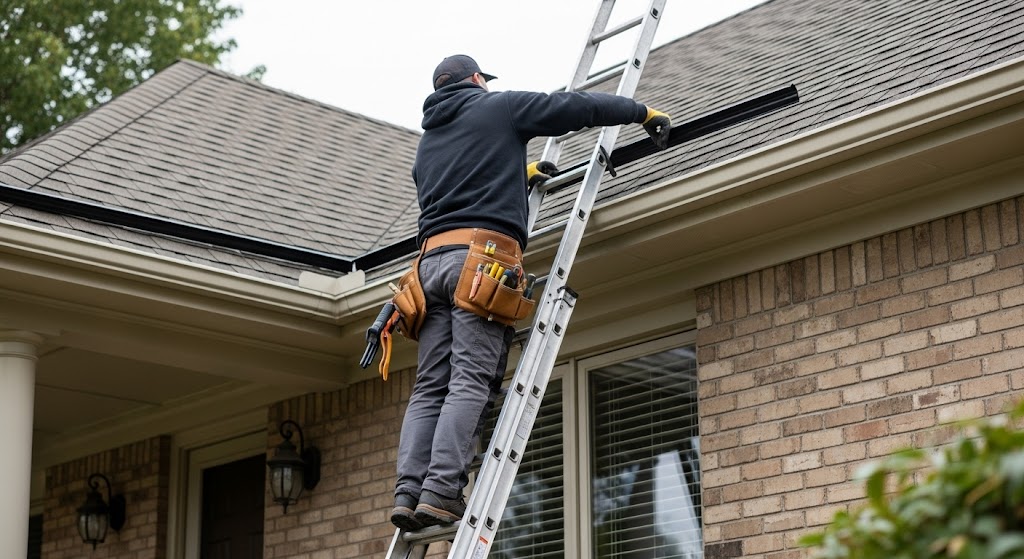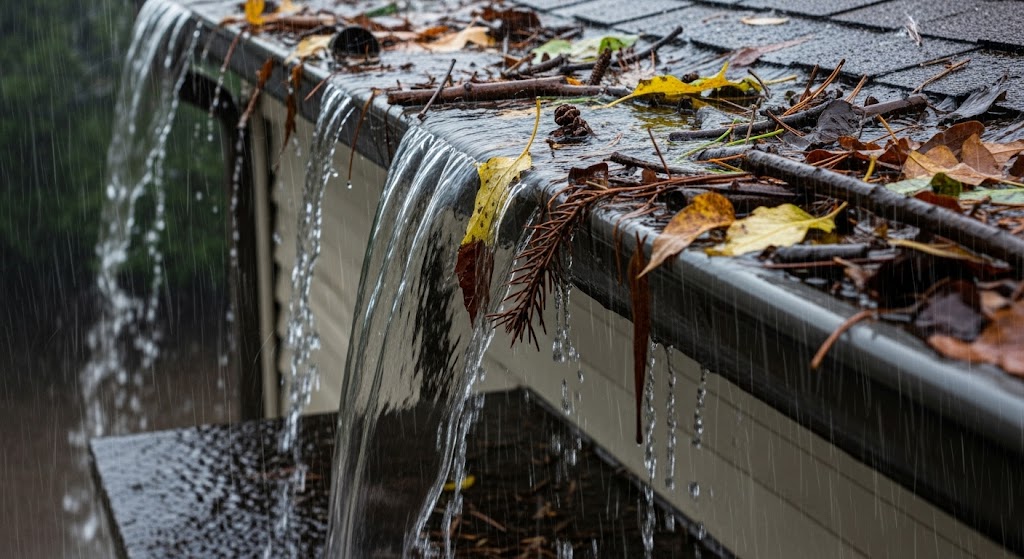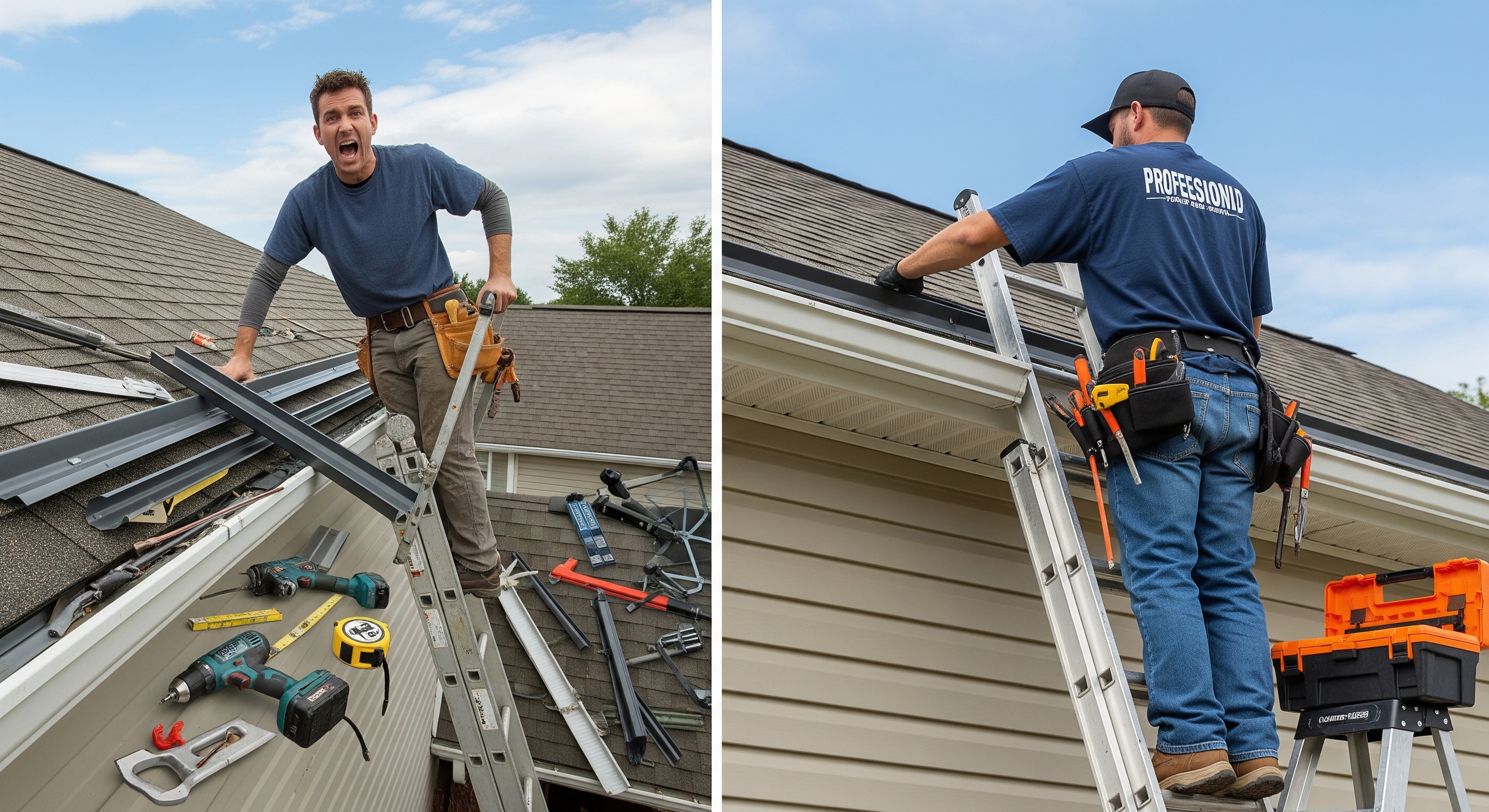
Best Gutter Guards for Pine Needles, Heavy Rain & Ice-Prone Roofs

Home exteriors face a trifecta of challenges: incessant pine needle buildup, torrential downpours, and the risk of ice dams on cold-weather roofs. Debris accumulation can lead to clogged downspouts, water overflow, and structural damage. Selecting a gutter guard system that tackles fine pine needles, channels heavy rain without spillover, and minimizes ice dam formation is essential for lasting roof and foundation protection. Home exteriors face a trifecta of challenges: incessant pine needle buildup, torrential downpours, and the risk of ice dams on cold-weather roofs. Debris accumulation can lead to clogged downspouts, water overflow, and structural damage. Selecting a gutter guard system that tackles fine pine needles, channels heavy rain without spillover, and minimizes ice dam formation is essential for lasting roof and foundation protection. To find the right solution for these conditions, review our comparison of the most effective types of gutter guards.
Why Gutter Guards Matter for Pine Needles
Pine trees shed needles continuously from late summer through winter, creating mats that interlock in gutter troughs. Those thin needles clog perforated shields, compromise water flow, and accelerate corrosion at the fascia. A fine micro-mesh screen blocks needles while allowing rainwater through, preventing shingle grit and pollen from entering the system. Effective gutter protection for pine needles preserves gutter slope and keeps downspouts clear year-round.
Understanding Gutter Guard Types
Gutter guards vary by design, each with unique advantages. Micro-mesh guards feature woven stainless steel or aluminum with holes as small as 200 microns, blocking smallest debris. Reverse-curve systems use surface tension to divert water inward while throwing needles off the edge. Foam inserts fit inside the gutter channel, halting large debris but requiring periodic rinsing. Brush guards mimic bottle brushes, trapping pine needles on their bristles and letting water flow around them.
Key Features for Heavy Rain Protection
In regions with high rainfall intensity, overflow prevention is critical. Guards with a V-shaped trough design direct large volumes of water securely into the gutter, reducing splash-over at the lip. Secure aluminum rails and corrosion-resistant stainless steel prevent sagging under sustained water weight. Properly pitched guards maintain a continuous flow to downspouts, safeguarding roof eaves and foundation walls from erosion during storms.
Material Durability Under Downpour Conditions
Aluminum frames coated with powder-coat finish resist rust and UV degradation, ensuring long service life. Stainless steel mesh withstands abrasive grit carried by rainwater and resists corrosion from acid rain. PVC-backed guards offer a budget-friendly alternative but may warp under extreme heat. Sealants at seams and robust fasteners prevent water from escaping between guard and roof shingles, preserving the integrity of the gutter system.
Preventing Ice Dams on Roofs
Ice dams form when uneven roof temperatures cause snowmelt to refreeze at colder eaves. Water pools behind the ice ridge, seeping under shingles and into the attic. Gutter guards alone cannot eliminate ice dams, but those with heated cables or integrated thermal strips reduce snowpack freeze at the gutter line. Ensuring proper attic insulation and ventilation complements guard performance by keeping roof temperature uniform.
Do Gutter Guards Cause Ice Dams?
Many homeowners worry that guards trap snow and exacerbate ice dam formation. In reality, micro-mesh screens sit flush with the gutter and allow melting snow to flow freely. Reverse-curve designs can hold small snow accumulations on top of the shield, potentially encouraging freeze-thaw cycles. For ice-prone roofs, choosing low-profile micro-mesh guards and pairing them with roof de-icing cables offers the best prevention without impeding drainage.
Top Picks for All-Weather Gutter Protection
A professional evaluation of market-leading options revealed three standout systems that combine pine-needle defense, heavy-rain throughput, and ice-dam avoidance:
Each product features high-grade materials, DIY-friendly installation profiles, and lifetime performance warranties. These systems adhere to fascia boards with stainless-steel hardware, minimizing roof shingle disturbance and preserving manufacturer warranties.
In addition to these top picks, readers seeking comprehensive best gutter protection solutions can explore further customization for unique roof pitches, gutter sizes, and climate conditions.
Raptor Stainless Mesh Guard
Raptor’s micro-mesh screen combines stainless steel mesh and aluminum support rails to block particles down to 200 microns. Its rigid V-trough channels heavy rainfall into the gutter, and the tight weave resists pine-needle penetration. V-bend technology strengthens the panel, enabling it to bridge gutters up to seven inches wide without sagging under snow or debris weight.
Leaf Filter Pro Surgical-Grade Mesh
LeafFilter installs a surgical-grade stainless steel mesh beneath a low-profile frame that tucks under roof shingles. This reverse-curve-free design ensures melted snow flows directly into the gutter, reducing ice accumulation. The uPVC frame resists UV degradation, and the mesh stops pine needles, shingle grit, and pollen—making it ideal for homes surrounded by conifers.
For step-by-step setup and best practices, the Gutter Guard Installation Guide offers detailed instructions and maintenance tips.
Gutter Glove Elite Micro-Mesh
GutterGlove’s Elite series uses 304-grade stainless steel mesh supported by aluminum rails. A fine micro-mesh layer traps the smallest debris, while the patented folding design sheds pine needles off the surface. Its universal fit accommodates both five- and six-inch gutter profiles, and its V-shape design promotes self-cleaning when heavy rain washes away debris.
Material Comparison and Selection
Stainless steel micro-mesh ranks highest for pine-needle defense and ice-dam safety. Aluminum screens balance cost and performance for moderate debris loads. PVC and foam provide a budget solution but require more frequent maintenance and bear higher ice-dam risk on cold eaves. For a closer look at how these options compare in price and installation value, see our gutter guard installation cost breakdown.
Conclusion
Selecting the right gutter guard system is a balance of fine-mesh debris filtering, heavy-rain throughput, and ice-dam prevention. Stainless steel micro-mesh products like Raptor, LeafFilter Pro, and GutterGlove Elite lead the market with durable materials and reliable performance across climates. Proper installation, regular inspections, and pairing with attic insulation ensure maximum roof protection. Homeowners seeking professional-grade gutter solutions can rely on home defender USA for expert service and comprehensive maintenance packages.
FAQs
Q1: How often should gutter guards be inspected? Gutter guards benefit from semi-annual inspections—in spring to clear pollen and in late autumn after most pine-needle drop. A quick visual check ensures no gaps or debris buildup that could impede water flow.
Q2: Can gutter guards void my roof warranty? Professional micro-mesh installations that fit under shingles without lifting or altering roof materials typically preserve shingle warranties. Reverse-curve units that clip over shingles may breach warranty terms.
Q3: Will gutter guards stop all debris from entering? Micro-mesh guards block fine debris like pine needles, shingle grit, and seed pods. Reverse-curve and foam guards halt larger leaves and twigs but allow fine particles through, necessitating occasional gutter cleaning.
Q4: Do gutter guards reduce ice dam risk? Alone, guards don’t eliminate ice dams. However, low-profile micro-mesh systems paired with heated de-icing cables and proper attic insulation significantly mitigate freeze-thaw cycles at the gutter line.
Q5: Are DIY installations reliable? DIY micro-mesh and snap-in systems work well when installed per manufacturer instructions. For complex rooflines, professional fitment ensures stable attachment, correct pitch, and warranty coverage.














.jpg)











